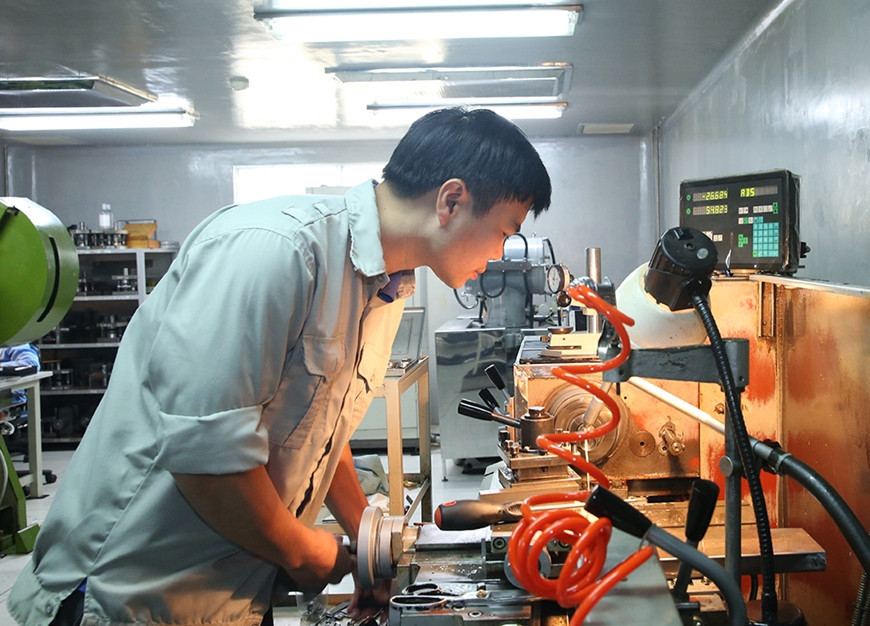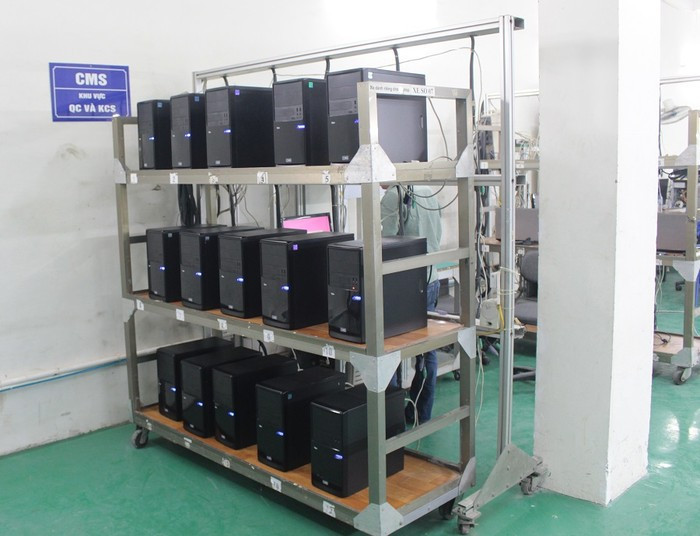Vietnam embarked on the path toward building a semiconductor industry as early as 1979. Despite early efforts, the dream has yet to be realized - a lingering pain point for many Vietnamese technology enterprises.
Now, however, history may be turning a new page as Vietnam eyes a fresh opportunity to become a global semiconductor hub, with new generations striving to fulfill this long-cherished ambition.
A vision born in the post-reunification era

At the seminar “Chip value chain and opportunities for Vietnam,” Professor Tran Xuan Hoai from the Vietnam Academy of Science and Technology recounted the early milestones of the country’s semiconductor journey. He emphasized that Vietnam’s interest in semiconductors began long ago.
Just four years after the nation’s reunification, in September 1979, the Z181 Semiconductor Factory was established. It began producing and exporting diodes and transistors under government contracts.
Even earlier, in 1962, Professor Dam Trung Don at Hanoi University had already been researching and teaching semiconductors, successfully creating transistors. By 1974, the Institute of Physics had set up a semiconductor lab, and in 1975-1976, the first batches of silicon transistors were produced using Planar-Epitaxi technology. In 1976-1977, the military imported Western European equipment and manufactured silicon transistors as well.
The Z181 factory marked a significant step forward. However, by the late 1980s and early 1990s, global political shifts led to a loss of international orders. Consequently, Z181 had to halt its chip packaging and production operations.
Interestingly, in South Korea, Samsung had only produced its first silicon transistor in 1974 - five years before Z181. By the early 1990s, Korea had become a semiconductor powerhouse, while Vietnam’s industry stalled and effectively returned to zero.
A dream of building Vietnam’s first computer lost to fire

Nguyen Trung Chinh, Chairman of CMC Corporation, reflected on Vietnam’s electronics history, noting both moments of pride and missed opportunities due to weak policies and lack of market protection.
In 1986, the National Institute for Technology Research initiated a project to design and manufacture Vietnam’s first computers. As a top graduate in Electronics and Telecommunications from Hanoi University of Science and Technology, Chinh joined the project team at the Institute of Microelectronics.
The team had privileged access, reporting directly to Prime Minister Pham Van Dong. They obtained rare foreign technical documents, including confidential BIOS information. Despite difficulties, they managed to import a computer production line, and soon produced a prototype series of 100 test units known as “Bac To computers” (named in honor of Prime Minister Pham Van Dong). These computers featured 12-bit Hitachi CPUs, dynamic RAM, 1.44-inch disk drives, motherboards, keyboards, and EPROM development systems.
Although bold, this leap into 12-bit computing was timely, aligning with the global shift from 8-bit to 16-bit systems. Chinh went on to design a motherboard and even received permission to outsource production to Taiwan.
Then disaster struck.
On a Sunday - the very day the team finalized the motherboard design and printed the film for production - a fire broke out at the Institute. All intellectual property, design documents, and specialized equipment were destroyed. That fire erased what could have become Vietnam’s first “Made in Vietnam” computer line by 1989.
The fire consumed not just documents, but also a specialized German design system worth about USD 100,000 - an enormous loss at a time when the country was still struggling with food shortages and poverty.

“For nearly two years, we went from being pioneering researchers to jobless. But looking back, what we’re proud of is that even in such hardship, with the right strategy and burning passion, a team of ten young scientists brought Vietnam to the threshold of cutting-edge technology,” Chinh shared.
In 1991, Professor Chu Hao allowed them to establish ADCOM, a center for computer research and development. It operated independently, without government subsidies.
The team initially sold and repaired computers to fund their research. By 1993, computer usage was growing in Vietnam.
Eventually, Chinh returned to his unfinished dream. He began assembling computers, launching CMS - the first Vietnamese-produced computer brand.
However, Vietnam’s industrial policy offered no support. In fact, it was counterproductive: import taxes on components were higher than for complete units. This, combined with poor market regulation, crushed the chance to develop a domestic computer industry.
“From the fire at the Institute, to the lack of support for computer assembly and weak market regulation - it all destroyed Vietnam’s chance to produce its own computers. Today, the opportunity is gone. We’ve missed our window,” Chinh concluded.
He added that with a population of over 100 million, Vietnam is no small market. But without good policies and market protection, there’s no space for domestic manufacturers to thrive.
Thai Khang